
October, a golden season of ripe rice and goldenrod, turns to orange and red in November as the colors of autumn thicken. But we are still reveling in the season of shinmai, dining on the new crop of rice. The plump, chewy grains pair so well with other autumnal flavors like Ginko nuts, mukago, and Matsutake mushrooms.
In days gone by, a sense of ease settled when the harvest restored rice bins and storerooms to their fullest potential. Times are changing for sure, but rice has long been an ecosystem unto itself in Japan, inseparable from the spirit of the nation. It is a crop that fuels both the people and the culture, a most important element in architecture, craft, cuisine, and faith. The grains themselves are revered most, the pure core fermented into sake, the national drink that spirits parties and shinsen offerings to the gods. At the table, snow white grains of rice speak to the soul as they pass the lips. There is always room for one more bowl of rice. The bran shaved from the grains becomes nukazuke, a fermented mash from which to fashion quick pickles. These pickles are are mana for my mother-in-law. We joke that we could feed her steak, lobster and Dom Perignon but if she didn’t eat her nukazuke pickles, she’d report that she’d been offered nothing for dinner.

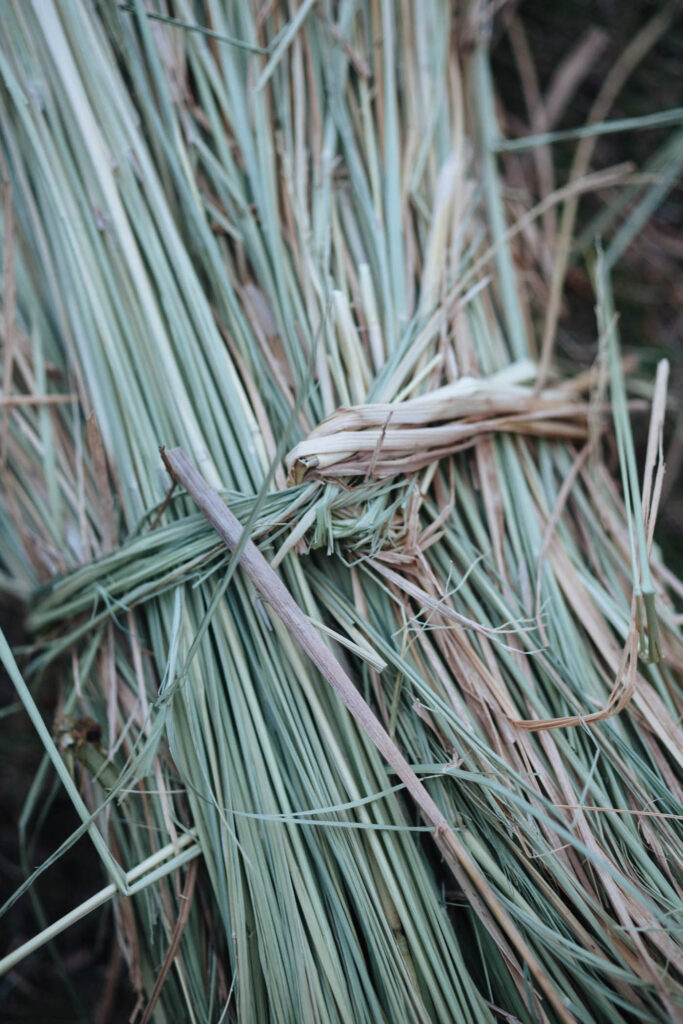
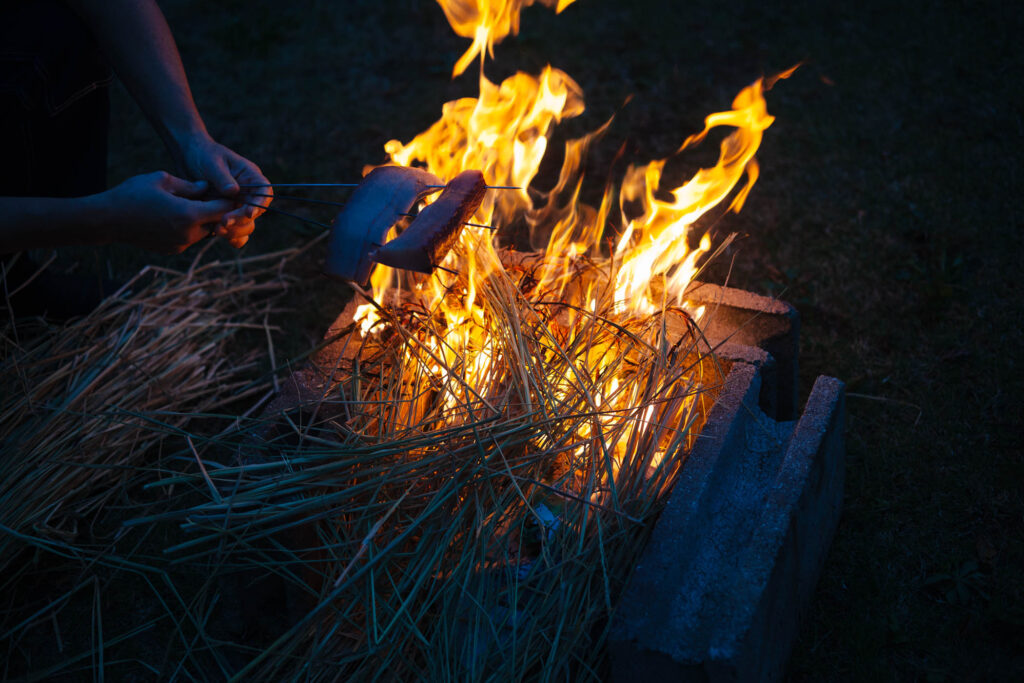
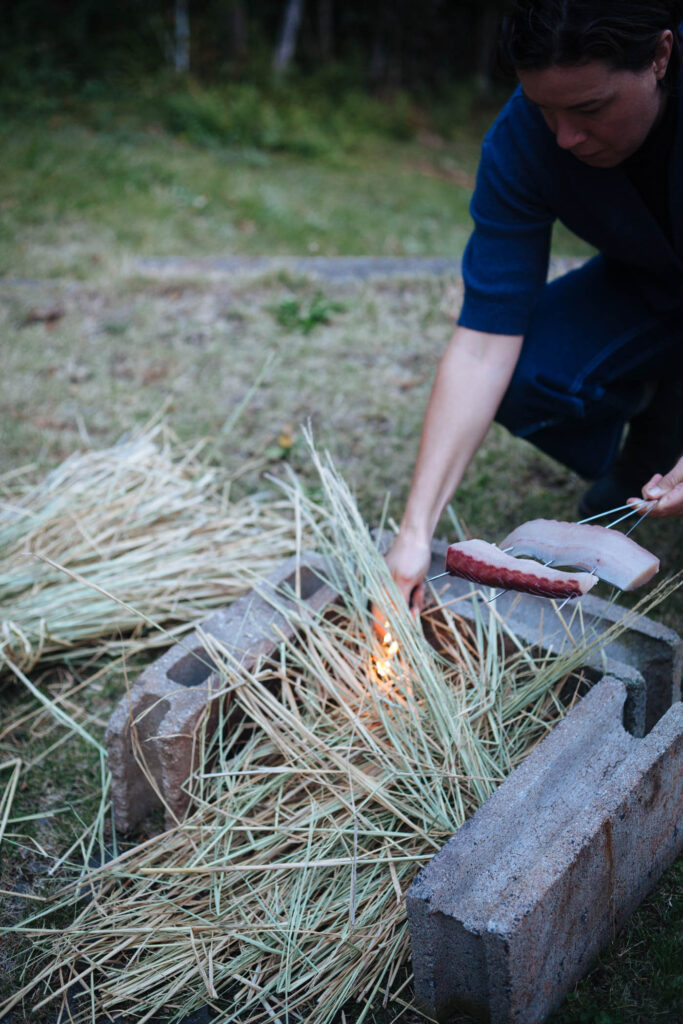
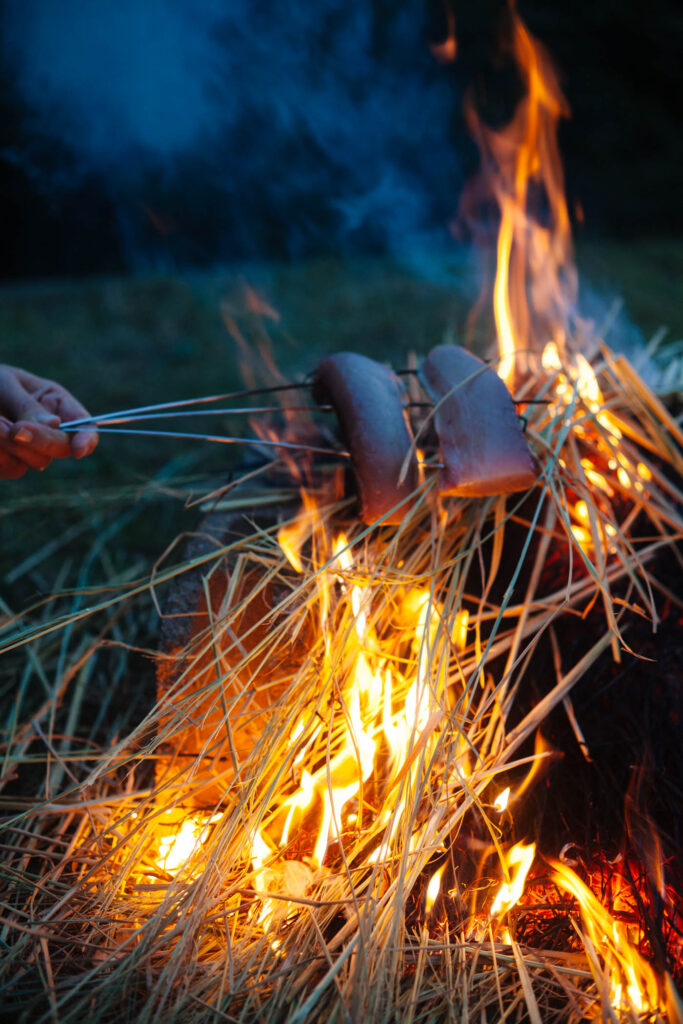
Each stalk of rice is said to hold ten thousand kernels of grain and each one is precious. To leave even a single grain in your bowl is to offend the people and gods who bear witness. But what of the stalk, left behind after harvesting the precious grains? Wara rice straw finds its way into numerous aspects of physical and spiritual life in Japan. For centuries, thick kayabuki roofs made of this straw shed water from earthen walls and kept families dry in one of the world’s wettest climates. Tatami stuffed with straw offered a soft, durable surface in homes for soles to tread. And in one of my personal favorite renditions, wara burns hot and bright to sear the tough skin of Skipjack tuna and Spanish mackerel in a dish known as tataki.
I first made tataki with my father-in-law when he brought home a skipjack tuna one early autumn day. Known as Katsuo in Japanese, these fish have two distinct seasons based on their migratory nature. In spring they travel north seeking cooler waters off the northern coast of Japan. These first katsuo, called hatsugatsuo, are lean and in the prime condition to make the best katsuobushi, smoked and dried to be shaved when preparing dashi soup stock. In autumn they swim south again with the name modori-gatsuo, returning katsuo. Fatter and meatier, they are prized for eating fresh.
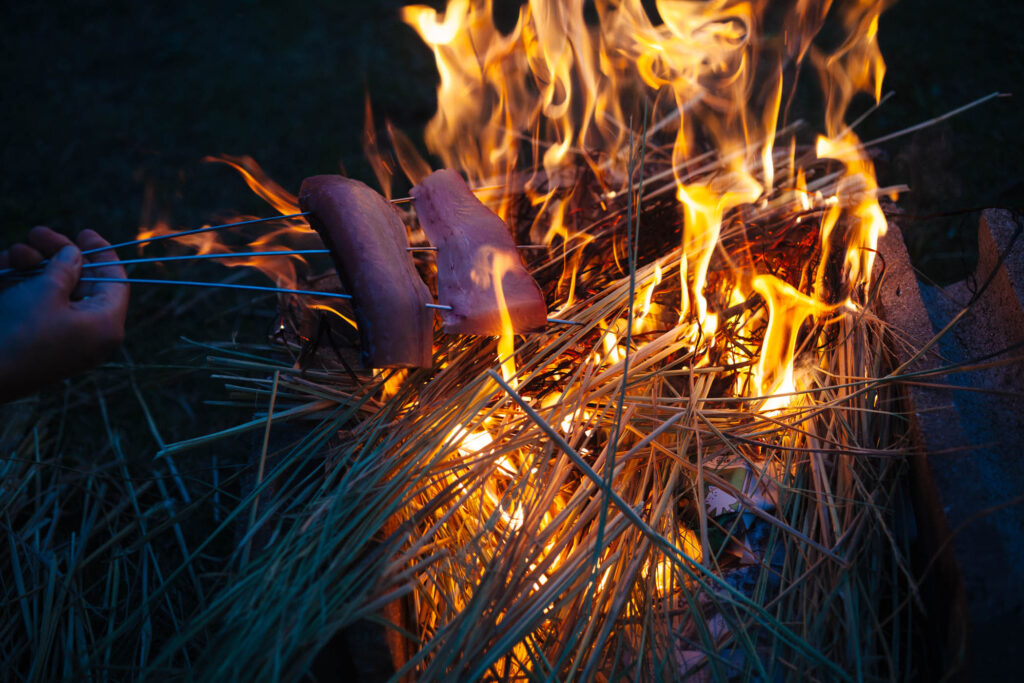


After our New Rice saloners spent an afternoon leaning to make New Year’s amulets out of wara, we were left with a great pile of rice straw and a hunger for tataki. And Skipjack tuna are not the only fish rendered divine when seared over a fire of burning rice straw. The thick silver blue skin of Spanish mackerel sears just as beautifully.
We have entered the season of First Winter. Though afternoons still shine bright and warm, the maples are turning and the setting sun leaves a stiff chill in its wake. We kindle stalks of rice, an iconic emblem of a season just passed, into a quick flame to grill the skin of an early winter fish. At the table, the blistered, skin and smoky scent harken to the smell of the fires we’ll soon light in the hearth. In one bite we can feel the seasons shifting.